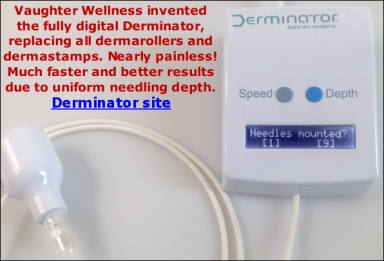Tyrosine is water-soluble, but very little. You should use Phenylalanine instead. It is more water-soluble and it is converted to tyrosine.
As I already said, Vitiligo is hypopigmented skin but it is not a scar. There is very little metabolic activity in scar tissue and what works for vitiligo doesn’t automatically work for scar tissue.
In the studies below, they targeted just the hypopigmentated area by UVA radiation.
Unfortunately you do not have the equipment to do targeted, intensive UV exposure, so you have to expose the entire area to the sun. Apply a high factor sunscreen on the skin all around the scar to prevent darkening of the skin that surrounds the scar.
Phenylalanine and UVA light for the treatment of vitiligo
R. H. Cormane, A. H. Siddiqui, W. Westerhof and R. B. H. Schutgens
The administration of phenylalanine (Phe) combined with UVA exposure was found to be effective in vitiligo. Phe is an amino acid which constitutes part of the daily dietary protein, and when orally administered in a dose of 50 mg/kg body weight, it results in an elevated plasma level. Since peak concentrations of Phe in the blood are reached between 30 and 45 min after ingestion, UVA exposure was administered at this time. After 4 months (32 treatments) reasonable repigmentation preferentially occurred in the skin area of subcutaneous fat (adipose tissue). Apart from the repigmentation of hypopigmented macules, vitiligo patients can tolerate more sun than usual, especially at the vitiliginous lesion, and they experience no sunburn as a result of Phe-UVA therapy. Normal skin also tans very well
Vitiligo Therapy with Oral and Topical Phenylalanine with UVA Exposure
C. Antoniou M.D.*, H. Schulpis M.D., T. Michas M.D., A. Katsambas M.D., N. Frajis B.S., S. Tsagaraki M.D., J. Stratigos M.D.
ABSTRACT: The administration of phenylalanine (Phe) combined with UVA exposure was found to be effective in treating vitiligo. Twenty-one patients with vitiligo were divided in two groups: eleven patients were treated with oral L-Phe in a dose of 100 mg/kg body weight and with UVA exposure and ten patients were treated with oral L-Phe in a dose of 100 mg/kg body weight and with UVA exposure. In addition, in the second group, a cream containing 10% L-Phe was applied to the vitiliginous areas. The best -+results occurred in the second group. No side effects were found in either group.
L-Phenylalanine and UVA Irradiation in the Treatment of Vitiligo
Siddiqui AH, Stolk L·ML, Bhaggoe R, Hu R, Schutgens RBH, Westerhof W
Dermatology 1994;188:215–218 (DOI: 10.1159/000247142)
Abstract:
In order to evaluate the efficacy of L-phenylalanine (L-Phe) in combination with UVA therapy for vitiligo an open trial (149 patients, 18 months) and a small double-blind trial (32 patients, 6 months) were conducted. Oral L-Phe loading resulted in peak plasma levels of L-Phe after 30–60 min and a slight increase in the plasma tyrosine level. Response to L-Phe plus UVA irradiation was positive, and various grades of repigmentation not exceeding 77% in the open and 60% in the blind trial were observed. An increased L-Phe dose resulted in increased L-Phe plasma levels but not in improved clinical results. The optimal L-Phe dose appears to be lower than 50 mg/kg/day. Although it is difficult to draw firm conclusions from the present investigation, we think that L-Phe may have a place in the treatment of vitiligo and its role merits further investigation.





